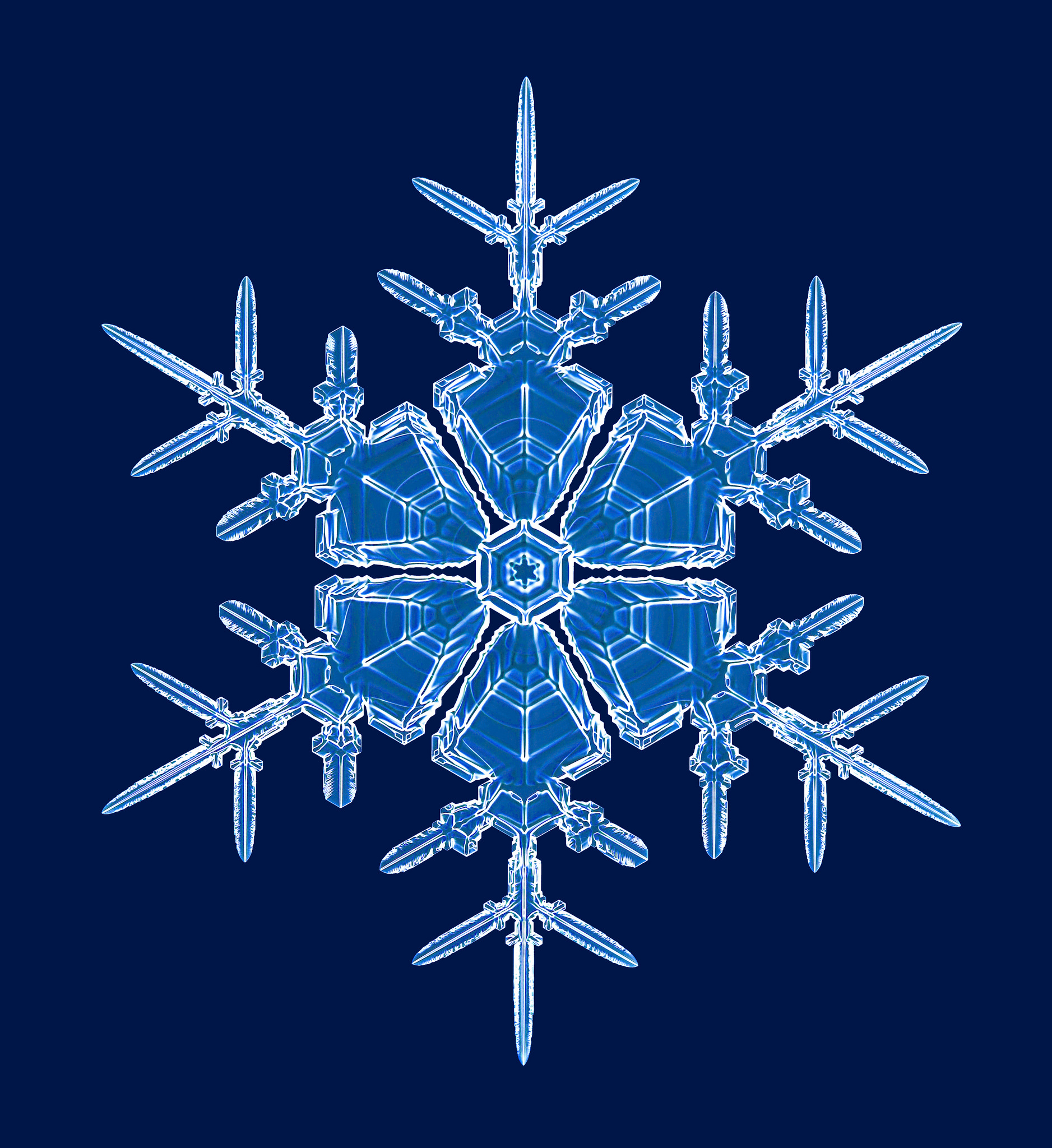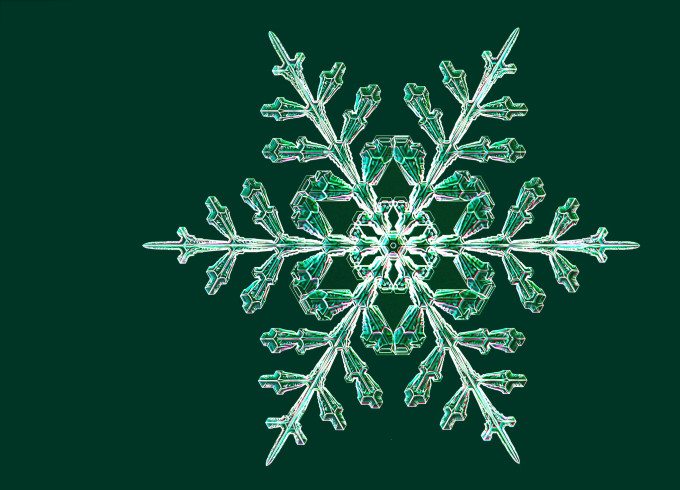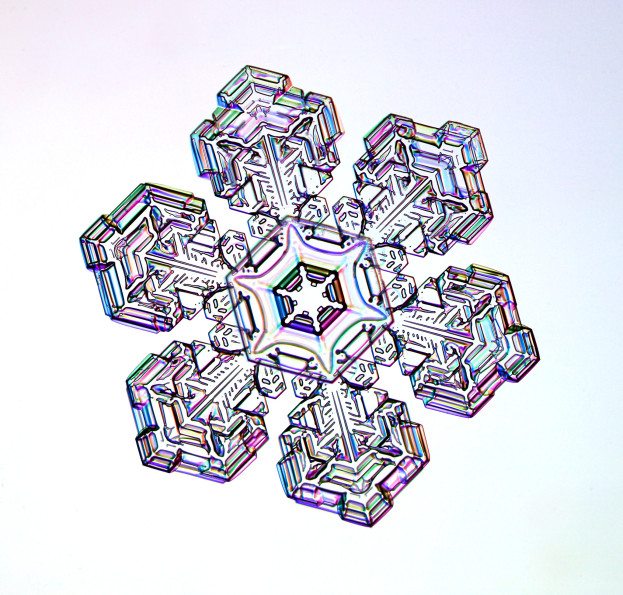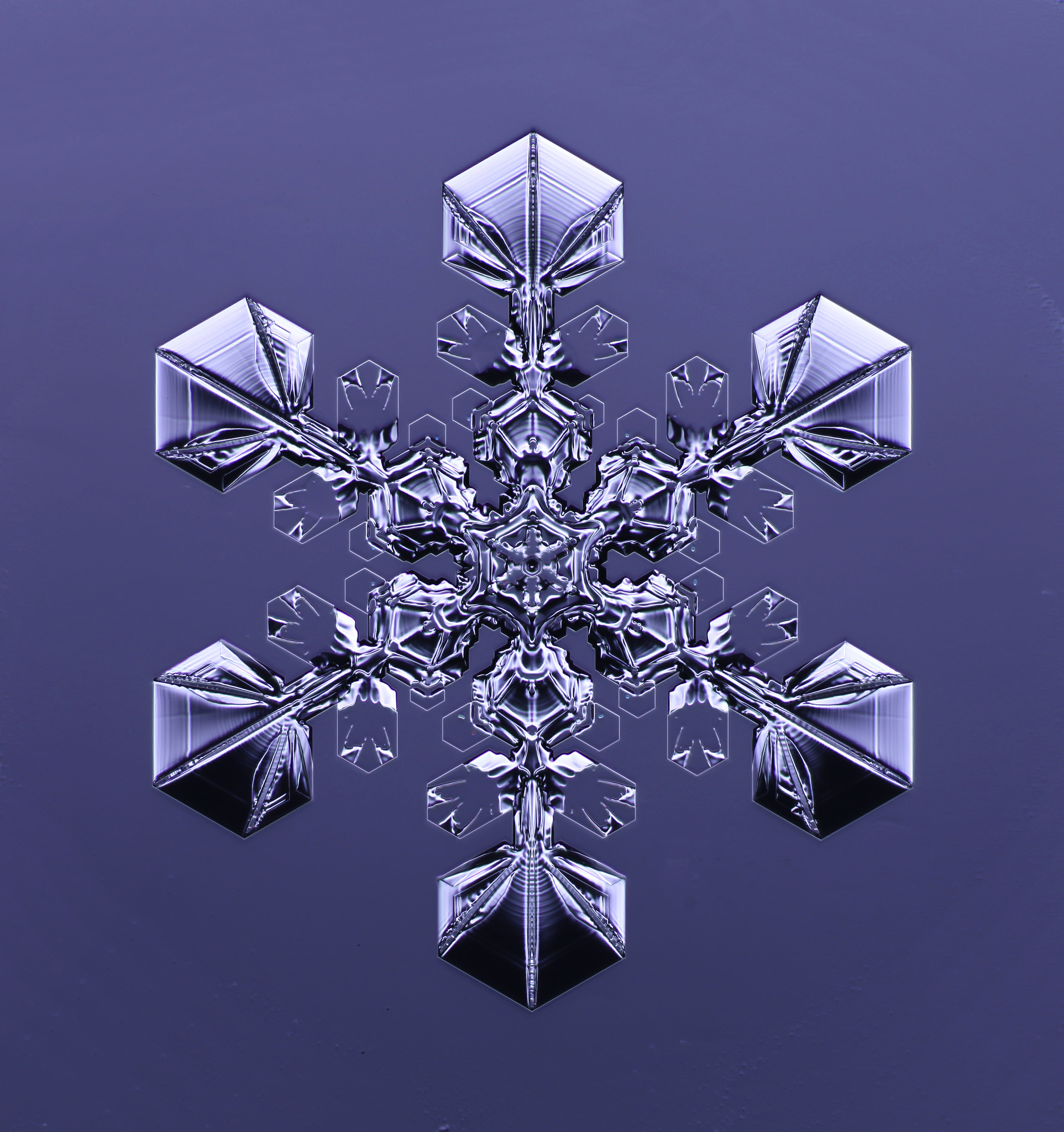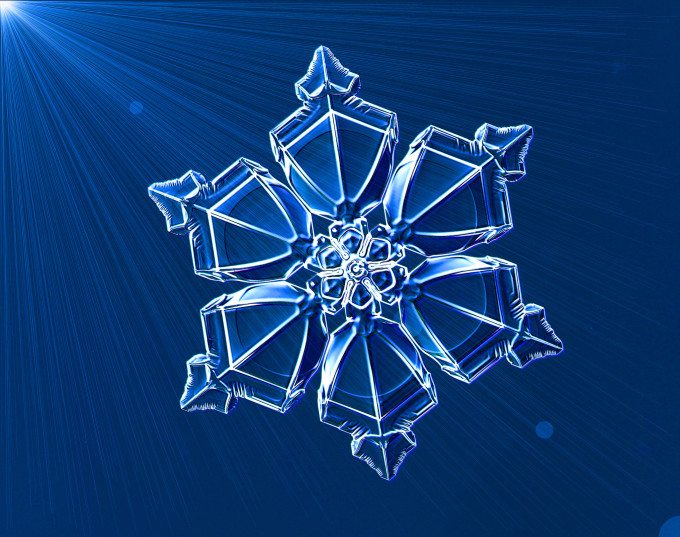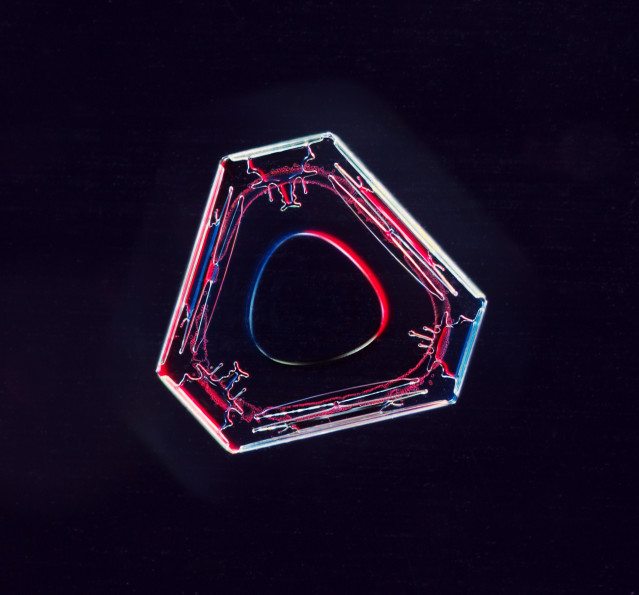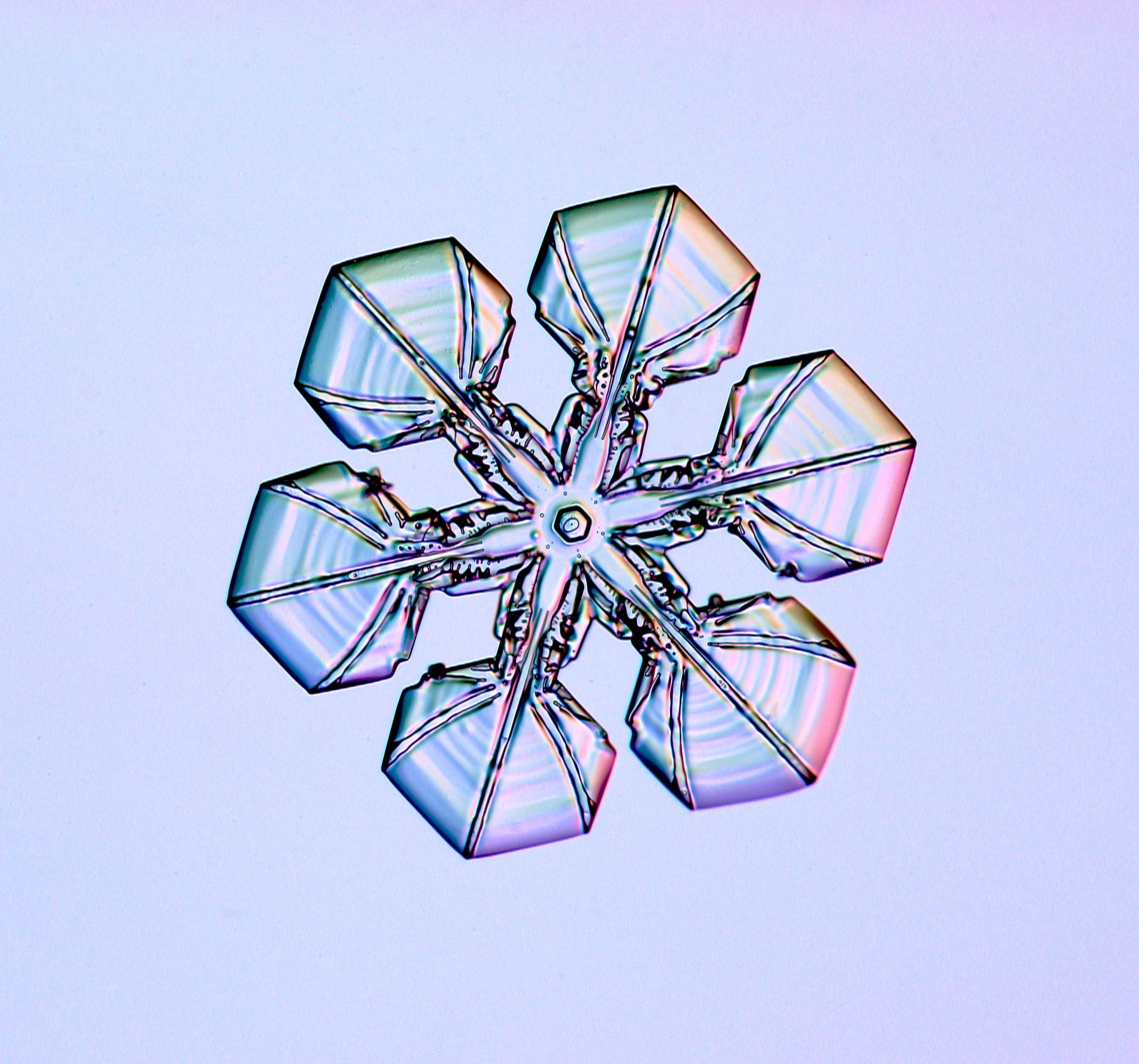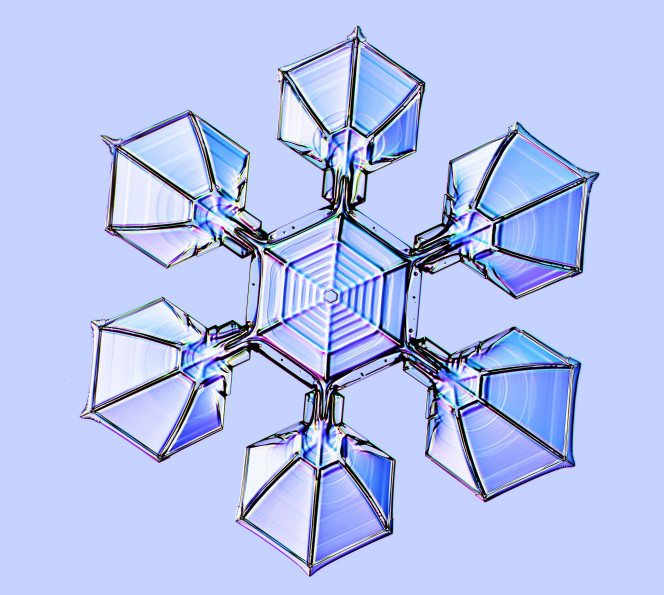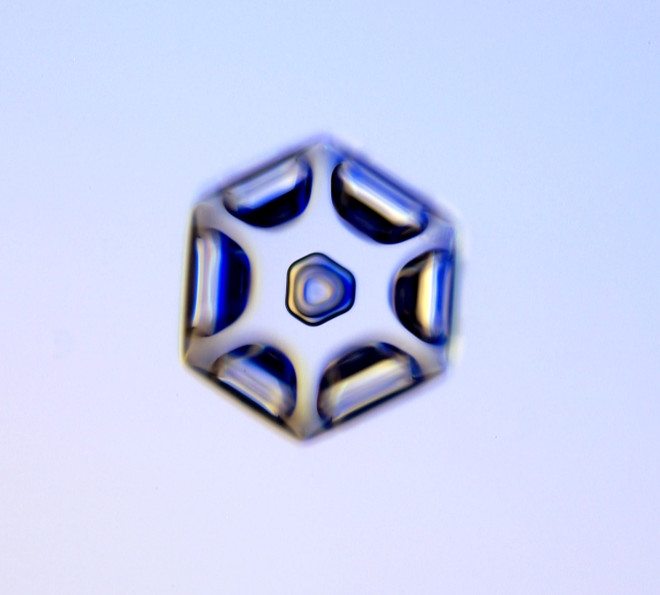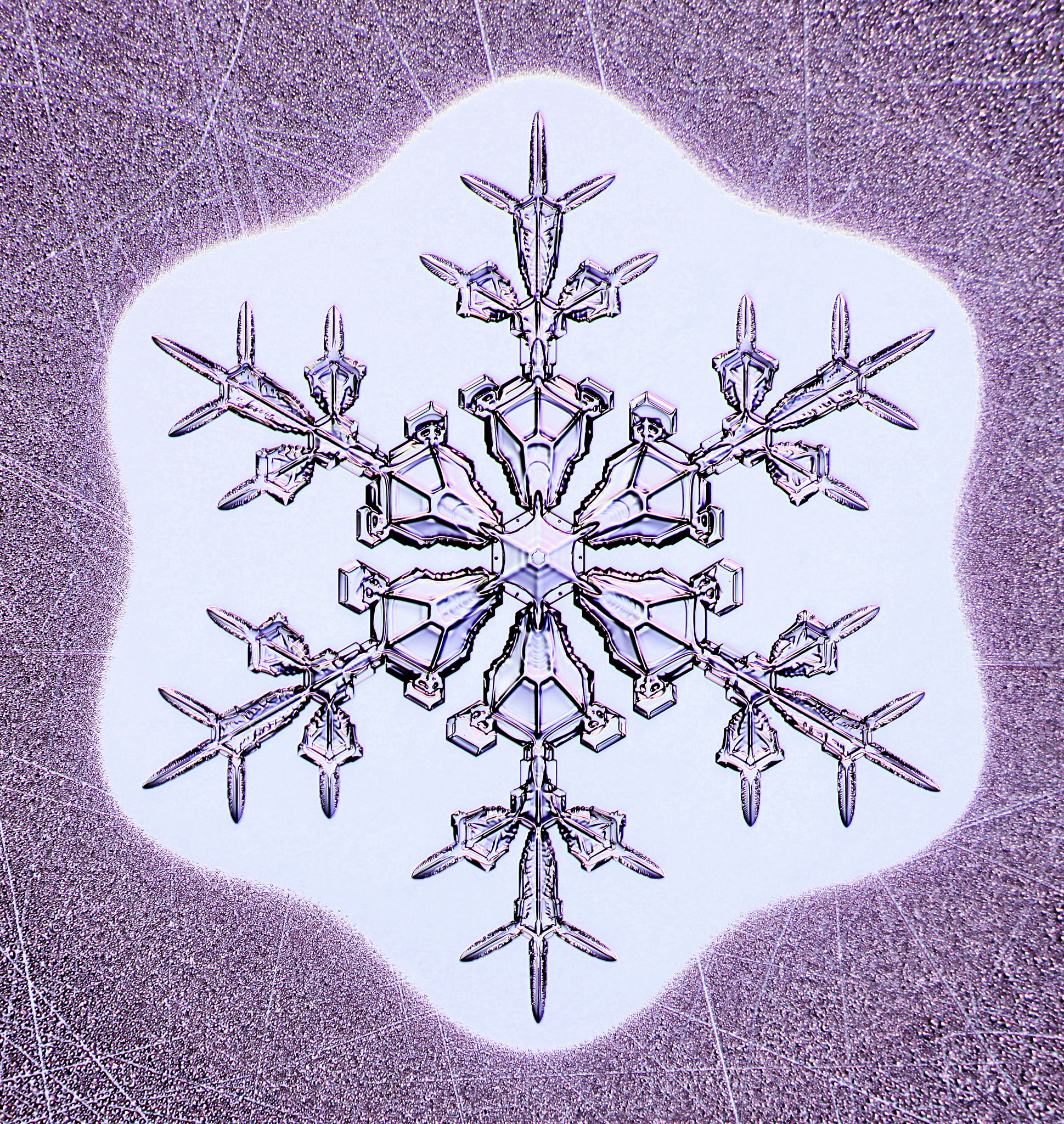All images by Kenneth Libbrecht. Used with permission.
Here in America, Global Warming is becoming more and more apparent because it’s freakin’ November and I barely need a light jacket here in New York we’re prepping for the cold, and that means snow. In turn, that means lots of photographers trying to photograph snowflakes. So who better to help you than a man that grows them in a lab?
Kenneth G. Libbrecht is one of the authors of a book called The Snowflake: Winter’s Frozen Artistry, which is being released in collaboration with Rachel Wing. Kenneth is a Professor of Physics, and has an interest in the molecular dynamics of crystal growth. That lead him to become interesting in deposition–the process of a gas becoming a solid. In his lab, he studies how ice crystals grow from water vapor.
But he also got really into capturing the process as it happens.
Phoblographer: Talk to us about how you got into photography.
Kenneth: My professional interest in photography began back during my early career in astronomy. As CCD technology developed, and computers became more capable, it became possible to generate a great deal of image data for a variety of reasons. For example, I estimate that I captured about 100 million full-disk images of the sun over a dozen years when I was studying helioseismology (solar oscillations). Most of these images were analyzed on the fly using an automated system, so we didn’t store all that data, but the camera was capturing 30 frames per second for months at a time. So, for me, photography began a tool for doing science.
Phoblographer: How did you first get into shooting snowflakes?
Kenneth: This came about from the science side also. In the late 1990’s I started studying the physics of how crystals grow, and how patterns emerge during crystal growth. The snowflake was an obvious case study, so I began reading about it. I soon found out that natural snowflakes were a lot more interesting than I knew growing up in North Dakota! I also realized that people had done surprisingly little in the way of snowflake photography.
Wilson Bentley’s images from 1890-1930 were most often cited and used, but it was clear to me that modern photography tools had not been applied much to this subject, especially digital photography. So I set out to build a photo-microscope specifically for that purpose, and the first pictures were just stunning. At that point I got serious about visiting frigid places, standing out in the cold for hours on end, and capturing all different types of snowflakes. Over the past fifteen years I have taken about 10,000 snowflake photos and published eight snowflake books.
My latest project is growing snowflakes in the lab, where I can record the crystals as they grow, in addition to taking still photos. I describe all this on my website. Laboratory snowflakes are a better focus for someone residing in Southern California. Many others living is more suitable climes are now pursuing snowflake photography, as you can see on Flickr.
Phoblographer: How does one ensure that they actually capture an image of a snowflake? They seem to be gone very quickly due to heat in the air.
Kenneth: The largest, most photogenic stellar snowflakes appear when the temperature is around 0-10 F. At that temperature the crystals retain their shape for many minutes — ample time to find a good one, pick it up, place it on a microscope slide, and photograph it. At higher temperatures, say just below freezing, the crystals melt quickly, making snowflake photography quite frustrating.
One can also photograph snowflakes “as they lie” (rather than placing them on microscope slides), as is widely done by other photographers. I talk a lot about this in my new book, where I have included work from other photographers as well. It is also possible to preserve snowflakes in superglue (also in the book), and the resulting “snowflake fossils” (like insects in amber) can be viewed at room temperature.
Phoblographer: Macro lenses are probably the best for capturing snowflakes, but talk to us about the lighting behind all of this.
Kenneth: Macro lens are essential, although one can do surprisingly well using a smartphone with a $10 clip-on macro attachment. I have not done this myself, but there are some nice examples on Flickr. For the highest quality, one needs a good macro lens (at least; I prefer microscope objectives) and probably some focus stacking.
As for lighting, I usually illuminate the crystals from behind, using colored lights. The crystals refract the light in interesting ways, yielding colorful highlights. Many people see the colors and think crossed polarizers, but that’s not how it’s done (the birefringence of ice is too low). The technique I mainly use is called Rheinberg illumination (also described in the book). This method was first described by Julius Rhineberg in 1896 for biological specimens, and I believe I was the first to apply it to snowflakes. Mainly I like how the colored lights add a dimension of color to snowflake photography.
It is also possible to photograph snowflakes in ambient light (because modern cameras are so crazy sensitive), and Alexey Kljatov has been taking some beautiful pictures that way. In contrast, Don Komarechka uses a flash ring and lots of focus stacking, also realizing some stunning photos. Snowflake photography is getting quite a bit of attention these days, and people are exploring a number of techniques that have not been tried before. Alas, the craft remains quite difficult compared to photographing larger subjects.
Phoblographer: To you, what makes for a great snowflake image. And on a personal level, how does a snowflake image qualify as being portfolio worthy?
Kenneth: The most difficult part of snowflake photography is finding a worthy subject. Most snowflakes are not well formed, looking a bit like icy sand. The near-perfect stellar crystals we snowflake photographers like to display are quite rare. You need a lot of patience (waiting for the right snowfall) and persistence (looking through a lot of falling snow) to find a beautifully symmetrical crystal. (That’s one reason I have been shifting to lab-grown crystals.)
Symmetry seems to be a big part of what makes a snowflake beautiful; lopsided crystals are common, but they don’t seem to be as attractive. Complexity is also an ingredient; people seem to find complex symmetry especially pleasing to look at, and so do I. Of course a good photograph should also be bitingly sharp to show all the intricate details in the ice.
I also like to get away from the standard “shopping-mall” snowflakes (called stellar dendrites in the biz) and photograph the more exotic types, like capped columns, hollow columns, and triangular snowflakes. These are a lot of fun to look at as well.


